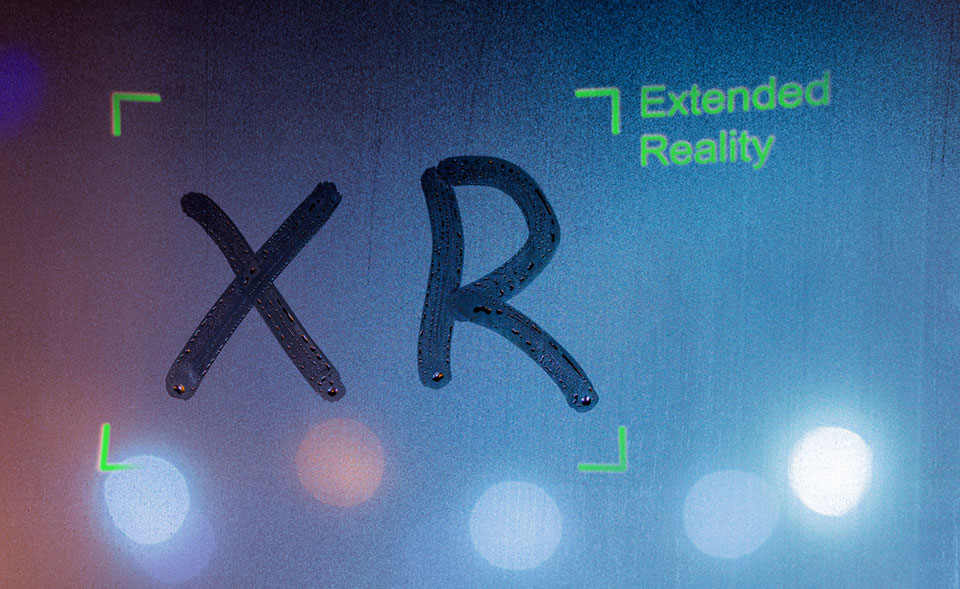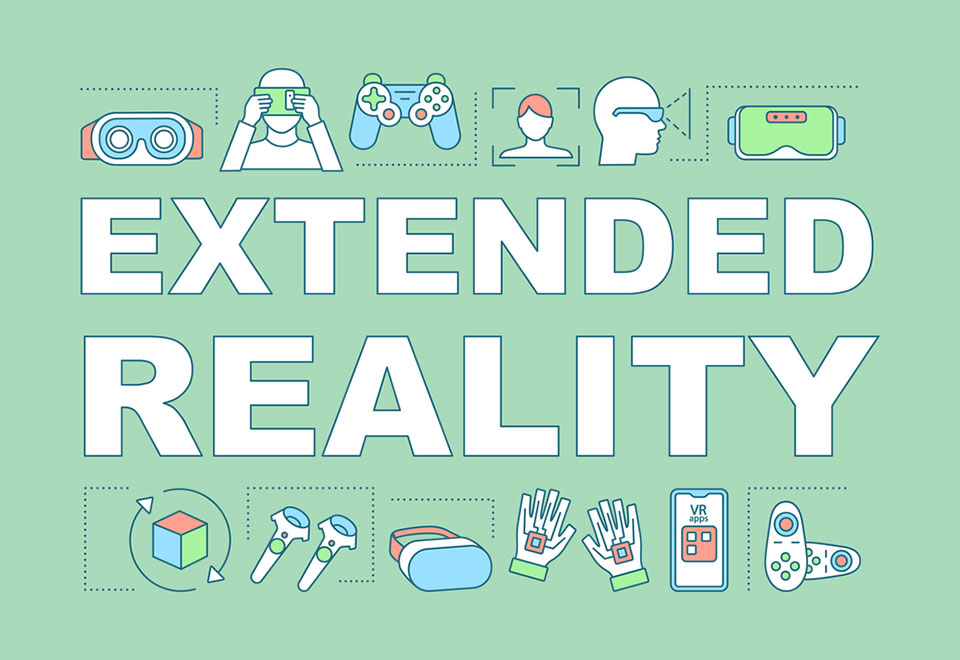XR in the Workplace Is Now

Once considered technology of the future, extended reality (“XR”) solutions and tools have moved out of the labs and into a hot, profitable market. XR is the umbrella term for immersive technologies such as augmented reality (“AR”), virtual reality (“VR”), and mixed reality (“MR”). A recent survey conducted by Perkins Coie LLP, Boost VC, and the XR Association found that in early 2020—even before the pandemic went global—executives expected immersive technology to increasingly affect businesses across a range of industries. As the world continues to adapt to the new realities caused by the coronavirus, XR is proving its utility and potential in the current social distancing environment. Despite the obstacles posed by XR implementation and the pandemic, the time for XR in the workplace is now. This article highlights developments in the market since 2019, identifies opportunities for companies to incorporate XR workplace technology into their businesses, and discusses how the industry is addressing barriers to adoption.
What’s changed in the last year?
While investments and developments in immersive technology within the gaming and entertainment sectors remain strong from 2019, businesses in 2020 are recognizing the increasing utility of immersive technology in healthcare, education, and workforce development and training. Interest in these sectors is growing, and two-thirds of survey respondents expect spending on immersive technologies to significantly increase this year. Consistent with these survey results, industry analyst International Data Corporation (IDC) reported in May, amid the global health crisis, that worldwide spending on commercial VR solutions inclusive of hardware, software, and services is expected to rise from $4.5 billion in 2019 to $7.1 billion in 2020. Industry leaders see workforce development and training as an area that could experience a noticeable degree of disruption. As the shift to a remote workforce shows signs of being a long-term change, businesses need to find ways to improve day-to-day operations, enhance efficiency, and improve outcomes in an environment where social distancing impedes face-to-face interactions and collaboration. XR in the workplace could very well provide an effective solution to issues precipitated by the global pandemic.
Where are the opportunities for companies to incorporate XR in the workplace?
Seventy percent of survey respondents believe businesses will focus on employee training and development in the next year, particularly because the return on investment, payback period, and resulting impact to the bottom line are easily quantifiable. For instance, large companies can incorporate immersive technologies to effectively complete “in-person” trainings for employees worldwide without the cost and risk of travel and lodging for participants. Another option is the use of simulated training scenarios for employees in advanced manufacturing and healthcare positions. This saves on the cost of physical training materials and equipment while also yielding better results and improved performance for trainees. MR industry-specific applications are being developed for use on Microsoft’s HoloLens 2, a wireless headset that allows users to “learn by doing.” GIGXR offers an immersive learning platform on the HoloLens 2, delivering XR applications globally for medical and nursing schools, higher education, and healthcare. Users can access 2D screens and books and employ true-to-life 3D simulations in a collaborative space, broadening and deepening the impact of training.
But what is proving to be more pressing in 2020 is the need for applications that help bridge the gap created by social distancing and remote work. To address this demand for teaming and collaboration tools, companies have created platforms allowing professionals to work together in virtual spaces and share content using intuitive and effective XR technology. Software from vSpatial and Spatial welcomes users into a virtual environment to meet through avatars, leveraging heightened functionality for presenting, teaming, collaboration, and productivity. MeetinVR enables companies to hold interactive meetings in VR with photorealistic resolution. Participants see the reflections and shadows of their 3D models for a realistic collaborative experience. According to MeetinVR, its solutions support fully focused meetings by removing distractions, resulting in a 25% increase in attention span among users compared to video conferencing. Another application, RemoteSpark, is an industrial AR tool that allows remote workers to establish low-bandwidth, secure video and audio calls with subject matter experts to help solve complex engineering problems. The experts are located worldwide and can see exactly what the remote worker sees while using holographic technology to support the task.
With remote work expected to be the widespread norm for the foreseeable future, businesses can justify the financial investment in these XR teaming and collaboration solutions through reduced expenses and risk related to travel and in-person meetings, decreased office costs due to the diminished need for physical work space, and shorter decision time thanks to better visualization and communication.
What are the barriers to incorporating XR in the workplace, and how can businesses overcome them?
The benefits of incorporating XR in the workplace are robust, but so are the potential barriers. It is worth noting that device availability may not have been a significant consideration at the time of the survey, which was conducted before the widespread reach of the global pandemic. While supply chain disruptions could conceivably pose an obstacle to device availability, there seems to be optimism that such issues will be short-term and will not interfere with meeting increasing demand in 2020 and beyond. With that being said, survey respondents noted that one of the primary concerns for businesses considering XR in the workplace was user experience, such as comfort with bulky hardware and navigating technical issues. Employees may be weary of wearing headsets for several hours of their workday and feel apprehensive about using headsets in tight living spaces where movement may be difficult in close quarters. And with the inevitability of technical glitches, the business-wide implementation of immersive technologies requires substantial training and support. Employees need the opportunity to get comfortable with the hardware and software, and information technology (IT) teams need to receive adequate training to provide this support. Accordingly, employers may not immediately appreciate the benefits given the potentially significant transitional periods before XR can be used effectively in the workplace.
As XR continues to develop, devices will naturally improve in design, making it easier for users to adapt. Headsets such as the Oculus Quest, for instance, provide gaming and entertainment capabilities without cables. By adopting XR early, companies may be able to more effectively plan and budget for their internal IT roadmaps and strategies, thus easing the transition period that inevitably accompanies any new system or technology. Alternatively, when weighing the cost of significant investments in time, stakeholder buy-in, financing, and an immersive top-down training program for employees, businesses can start small. Employers may consider launching a pilot program as a more gradual introduction to immersive technologies. Such a program would allow leadership and employees to test the technology in the workplace, determine its utility and value, and use those insights to determine whether a more expansive integration strategy for immersive technology is in the best interest of the business.
The purchase of costly devices is another potential barrier to XR adoption. Typically, companies would purchase a limited number of headsets for employees to share. These devices, however, are worn close to users’ eyes, nose, and mouth, heightening the risk of bacterial and viral transmission. This simply is not an option during our current global health crisis. The cost for a headset alone can range anywhere from US $400 to $3,500, depending on the provider and breadth of functionality. Users can also expect to pay for individual applications via one-time fees or monthly subscriptions, sometimes around US $100 per month. But these upfront costs may be worth the investment if they pay off with increased efficiency and production in the long run. Companies should evaluate their industry, their facilities, and their training capabilities and requirements. For example, if training needs to reach large numbers of personnel or prepare employees for situations that are difficult to replicate, immersive technologies may provide unique solutions. Additionally, companies that seek to collect performance data from training should strongly consider XR. Now may be a particularly ideal time to invest in or experiment with XR tools, as some companies, like vSpatial and Spatial, have reduced or eliminated the costs of their products and services in light of the pandemic. In addition, some product offerings are available for use on both Windows 10 and macOS computers, eliminating the need for a pricey headset. This option for “XR-lite” experiences can help reduce both financial and operational barriers to IT investment.
Consumer privacy and data security concerns are also top of mind for 49% of survey respondents and could impede adoption of immersive technology in the workplace. Employees may feel hesitant about some aspects of these technologies, such as eye tracking and biometric authentication, without a clear understanding of how this data is being collected or used. There are similar concerns about employees’ personally identifiable information collected in connection with the software. But in 2020, as data privacy compliance moves to the forefront, more companies are proactively addressing and updating their privacy policies and disclosures regarding consumer data. By sharing these policies and being clear about what information is being collected through XR, employers can demonstrate transparency and give employees peace of mind.
The path forward
As the need for social distancing and remote working persists, XR will allow employers to increase operational efficiency while reducing risk to the health of their employees. The market is catching on to the potential of XR, leading to increased investments in the technology. These investments will contribute to reduced costs for users, increasingly impactful applications with a diverse mix of content, and more mainstream access to XR. As the market grows, companies developing XR are releasing, updating, and improving products and services to serve innovation in workforce training, development, productivity, and collaboration. Consequently, there is no better time to embrace XR in the workplace.
Commentary by Gilbert J. Villaflor (Perkins Coie associate Danielle Grant-Keene contributed to this article). Here’s what you’ve missed?
The World’s Best Luxury Superyacht Charters And Builders.
Crewed MegaYacht charter in Greece and the Greek Islands.
Richest Self-made Women In The United States.
Luxury Superyacht charter in Greece and the Greek Islands.
Bring the best of the CEOWORLD magazine's global journalism to audiences in the United States and around the world. - Add CEOWORLD magazine to your Google News feed.
Follow CEOWORLD magazine headlines on: Google News, LinkedIn, Twitter, and Facebook.
Copyright 2025 The CEOWORLD magazine. All rights reserved. This material (and any extract from it) must not be copied, redistributed or placed on any website, without CEOWORLD magazine' prior written consent. For media queries, please contact: info@ceoworld.biz









